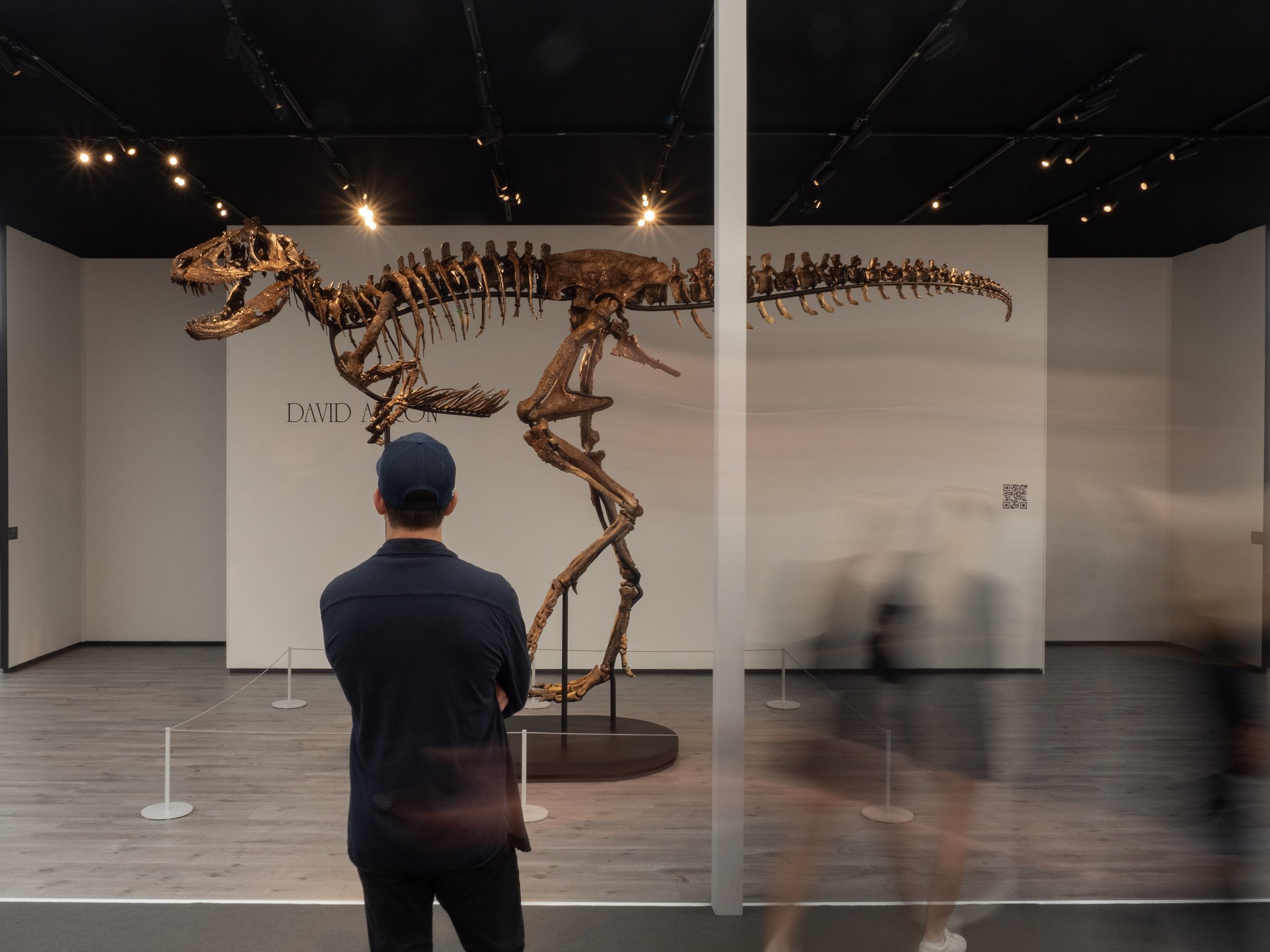
Towering over the paintings and sculptures on view at Frieze Masters this week is a decidedly different kind of object for sale: a dinosaur skeleton.
The specimen, nicknamed Chomper, is a rare example of a juvenile Tyrannosaurus Rex—and a pretty well-preserved one at that. It’s on offer through the London-based gallery David Aaron, with a price tag that is similarly eye-popping: $20 million. (The skeleton hasn’t sold yet, according to the gallery, though there are “several interested parties” circling it.)
Chomper dates back roughly 68 million years, from the Late Cretaceous period. The fossil was discovered in Garfield County, Montana in 2019, and took years to unearth in its entirety. Parts of the process were documented by the Discovery Channel series “Dino Hunters.”
The whole skeleton is approximately 55 percent complete, though the skull alone is 90 percent intact, and boasts a surprising number of original teeth. For interested buyers, the gallery will provide a map of the dinosaur, detailing which bones are present or missing.
“Chomper” at David Aaron’s Frieze Masters booth. Courtesy of David Aaron.
That Chomper is for sale at an art fair is somewhat surprising. Fossils of this significance tend to make their way to the market via high profile auctions, drawing competition from a broad swath of collectors who may not be interested in Monet and Modigliani. In 2020, Christie’s auctioned off Stan, one of the largest and most complete T. rex fossils ever excavated, for a record-setting $31.8 million. Last December, Sotheby’s sold a skull from the same species for $6.1 million.
But in recent years, as the market for prehistoric skeletons has grown more robust, dinosaurs have started to populate fair booths.
David Aaron—which specializes in “important items of natural history,” as well as Classical Greek, Roman, Egyptian, and Islamic works of art, according to its website—is among those leading that trend. At Frieze Masters in 2022, the gallery sold a complete skeleton of a 154 million-year-old Camptosaurus for £1 million ($1.2 million). Earlier in the year, at Masterpiece London, it sold the skull of a triceratops to a private collector for an undisclosed sum.
“Frieze Masters is the perfect platform because It attracts curators, collectors and members of the public,” said Salomon Aaron, the director of the gallery. “It is important for us wherever possible to try to make specimens available to the public either by exhibiting them or via selling to museums.”
Despite the steep learning curve and giganotosaurus prices, the skeletons have a broad appeal, Aaron explained.
“It’s something all humans can relate to, irrespective of culture or age,” the gallery director told the Art Newspaper. Chomper, he added, is a “once in a lifetime discovery.”
Still, $20 million is a big sum for an art fair, even for something prehistoric. Will the gallery find a buyer? Remains to be seen.
More Trending Stories: